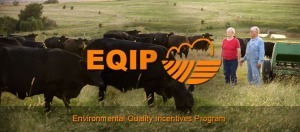Montana Stockgrowers Seeking Applications for 2015 Environmental Stewardship Award
 Helena, MT – Do you know a Montana rancher who is a leader in stewardship and sustainability, implementing conservation practices to ensure the social, economic, and environmental sustainability of their operation? Encourage them to apply for the Montana Environmental Stewardship Award, presented by the Montana Stockgrowers Association (MSGA). Applications for the 2015 award are due June 30.
Helena, MT – Do you know a Montana rancher who is a leader in stewardship and sustainability, implementing conservation practices to ensure the social, economic, and environmental sustainability of their operation? Encourage them to apply for the Montana Environmental Stewardship Award, presented by the Montana Stockgrowers Association (MSGA). Applications for the 2015 award are due June 30.
Each year, MSGA honors Montana ranches that exemplify environmental stewardship and demonstrate commitment toward improved sustainability within their communities. This award recognizes Montana ranchers who are at the forefront in conservation and stewardship and are willing to serve as examples for other ranchers.
“Montana ranchers are leaders in this country when it comes to being stewards of our environment and conserving the natural resources that help make Montana such a great state to live in,” said Gene Curry, MSGA President and rancher from Valier. “We are asking the community to get involved in helping us identify ranches that really go above and beyond when it comes to environmental stewardship and conservation in their local areas.”
 Last year’s recipient of the ESAP recognition was the American Fork Ranch, a commercial cow-calf operation in Wheatland and Sweet Grass counties. The American Fork is owned by the Stevens family and is managed by Jed and Annie Evjene, long-time active members of MSGA.
Last year’s recipient of the ESAP recognition was the American Fork Ranch, a commercial cow-calf operation in Wheatland and Sweet Grass counties. The American Fork is owned by the Stevens family and is managed by Jed and Annie Evjene, long-time active members of MSGA.
Over the past 17 years, the Stevens and Evjene families have focused on establishing relationships among all key aspects of the ranch: rangeland, water, crop production, cattle herd, wildlife, cottonwood forests, employees, family, community and the beef industry to integrate a model of sustainability. These cooperative efforts have led to relationships and projects in coordination with professionals from numerous universities, state and federal agencies, area and state Stockgrower organizations, and several youth programs.
Today, the American Fork Ranch is home to a diverse population of plant species and managed wildlife populations. Intensive record keeping, over a decade of range monitoring, water development projects and weed management have led to pasture conditions that promote diverse plant species and thick stands of stockpiled forage for year-round grazing. A heavy focus on riparian area management has allowed for recovery of plant species, Cottonwood forest regrowth, improved water quality and enhanced wildlife habitat, even in the presence of livestock grazing.
Read more about the American Fork Ranch on our blog.
Ranches wishing to apply for the 2015 ESAP award and recognition are asked to complete an application packet (available on our ESAP page), due to MSGA by June 30. Nominations can be submitted by contacting the MSGA office. Ranches must be a member of the Montana Stockgrowers Association to qualify for the award.
The ranch chosen for the award will be announced at MSGA’s Annual Convention and Trade Show in Billings, Dec. 3-5 at the MetraPark in Billings. The Montana ESAP winner will then prepare their application for the Regional and National Award competition, which is typically due in early March of the following year.
Since 1992, Montana Stockgrowers has honored 22 state winners, ten of whom went on to win the regional award and two named national award winners. To learn more, visit mtbeef.org, or contact Ryan Goodman at [email protected] or (406) 442-3420. The Montana Environmental Stewardship Award is funded in part by Montana Beef Producers with Checkoff Dollars.




 The Sage Grouse initiative is a diverse partnership between ranchers, state and federal agencies, universities, non-profit groups, and private business led by
The Sage Grouse initiative is a diverse partnership between ranchers, state and federal agencies, universities, non-profit groups, and private business led by 









